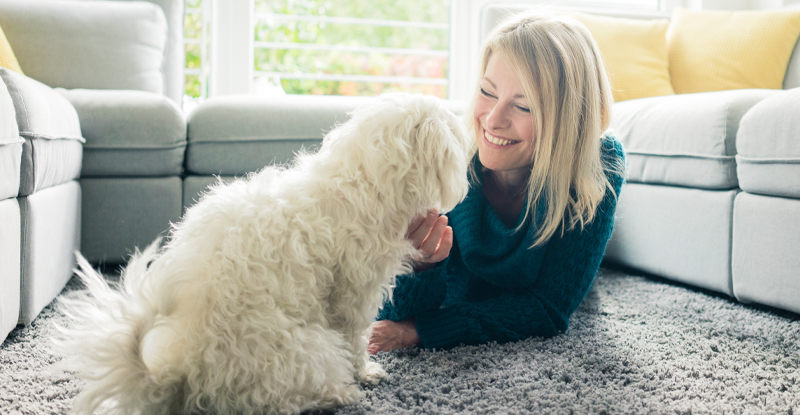Essential oils: How to use them and their benefits

Learn what essential oils really are and how to use them safely through skin or inhalation.
Alternative therapies can be used as complementary treatments for a variety of health conditions. Patients may try these treatments alongside or instead of conventional therapies. Often, these therapies have roots in traditional medicines from around the globe. One such example is essential oil treatment, which reaches as far back as 3000 B.C.E.—and it’s still popular today. Over the centuries, essential oils have treated a variety of ailments all over the world.
So, are essential oils right for you? Let’s find out.
What are essential oils?
An essential oil is a concentrated plant extract that keeps the natural smell and taste of its source. Obtained through pressing or distillation, essential oils are derived from the aromatic components often found in the leaves, bark, or peels of plants. Special crushing or steaming processes release the plants’ natural aromas. It takes a lot of plants to create just a small amount of pure essential oil—sometimes in the range of hundreds of pounds of a plant for just one pound of oil.
There are many essential oils used in aromatherapy, including Roman chamomile, lavender, cedarwood, ginger, bergamot, and lemon.1 The biochemical structure of each plant’s oil affects the smell, absorption, and effects on the body.
You can find essential oils in a variety of domestic products from perfumes and cosmetics to foods, beverages, and cleaning products. More recently, essential oils have become popular for their healing properties when used in aromatherapy. This treatment uses oils to improve physical, mental, and spiritual well-being.
How to use essential oils
Essential oils are most often used for aromatherapy or through topical application.
Aromatherapy can be administered by indirect inhalation, direct inhalation, or massage.
- Indirect inhalation: The patient sits in a room with a diffuser (or another source) with the essential oil.
- Direct inhalation: The patient uses an inhaler with the essential oil in it to breathe the oil in.
- Massage: The patient (or a practitioner) applies a mixture of the essential oil and a “carrier oil”—which helps reduce the chance of skin irritation—to the skin. This can also be paired with direct or indirect inhalation.
Bath salts, lotions, or bandages that contain an essential oil can also be used for aromatherapy. Essential oils may also be found in household products like air fresheners, cleaning products, and more.
Uses of essential oils in health care
- Cancer: Essential oils may have some anticancer properties, though research in this area is inconclusive.3 When used in conjunction with standard medical treatments, essential oils may help manage cancer symptoms or side effects of treatment.2
- Gastrointestinal: Peppermint essential oil has been the most studied for its effects on the gastrointestinal system and for relief of symptoms such as nausea, vomiting, and irritable bowel syndrome.4
- Anxiety/Relaxation: Lavender can have calming effects and may enhance sleep.4
- Minor burns: Lavender essential oil may have some effectiveness in treating minor burns.4
- Pain management: Studies have shown some effectiveness of essential oils in pain relief. Aromatherapy, in conjunction with approved pain management procedures, may help relieve pain and produces no negative side effects.4
Cautions
As with other medications and treatments, some people may have adverse reactions to some essential oils. Because essential oils come from natural sources, they are believed to be harmless. However, some can cause harm if used directly on the skin.1 Others and can be poisonous if ingested.1 Furthermore, the misuse of essential oils can cause serious side effects, such as allergic or hormonal reactions or rashes. It’s important that you only buy oils from a provider you trust.
Another concern is the danger essential oils may cause to pets, even when used in a diffuser. Those with pets should not use essential oil diffusers in their homes and should research the potential effects of any oils on their domestic animals before using them.9
For more information on what is known about different essential oils, please visit the National Capital Poison Center.
Conclusion
Essential oils are not going away anytime soon. The global market for essential oils was estimated at over $20 billion in 2011—and was expected to grow 10 percent annually.4 With that in mind, understanding the potential benefits and dangers is very important. With 40 percent of the essential oil market being sold and used in the U.S. alone, it is imperative that providers and patients feel comfortable having conversations around alternative therapies.
If you are interested in using essential oils, make sure you do your research—as you would with any supplement or medicine you are considering. Finding a company with a 100-percent-pure and tested product is important, as is understanding how to administer the essential oils for your conditions. Remember to question health claims on products and, when in doubt, discuss these products with your provider.
References:
1Aromatherapy. U.S. Food and Drug Administration. No date. Updated 2017 December 5. Accessed February 17, 2020. https://www.fda.gov/cosmetics/cosmetic-products/aromatherapy
2Aromatherapy with Essential Oils (PDQ®)–PatientVersion. National Cancer Institute. No date. Updated 2019 November 7. Accessed February 17, 2020. https://www.cancer.gov/about-cancer/treatment/cam/patient/aromatherapy-pdq
3Blowman K, Magalhães M, Lemos MFL, Cabral C, Pires IM. Anticancer Properties of Essential Oils and Other Natural Products. Evid Based Complement Alternat Med. 2018;2018:3149362. Published 2018 Mar 25. doi:10.1155/2018/3149362
4Boesl R, Saarinen H. Essential Oil Education for Health Care Providers. Integr Med (Encinitas). 2016;15(6):38–40. https://www.ncbi.nlm.nih.gov/pmc/articles/PMC5312835/
5Elshafie HS, Camele I. An Overview of the Biological Effects of Some Mediterranean Essential Oils on Human Health. Biomed Res Int. 2017;2017:9268468. doi:10.1155/2017/9268468
6Essential Oils. National Institute of Environmental Health Sciences. No date. Updated 2019 October 1. Accessed February 17, 2020. https://www.niehs.nih.gov/health/topics/agents/essential-oils/index.cfm
7Essential Oils: Poisonous when Misused. National Capital Poison Center. No date. Accessed February 17, 2020. https://www.poison.org/articles/2014-jun/essential-oils
8Firenzuoli F, Jaitak V, Horvath G, Bassolé IH, Setzer WN, Gori L. Essential oils: new perspectives in human health and wellness. Evid Based Complement Alternat Med. 2014;2014:467363. doi:10.1155/2014/467363
9Is the Latest Home Trend Harmful to Your Pets? What You Need to Know. American Society of the Prevention of Cruelty to Animals. 2018 January 17. Accessed February 17, 2020. https://www.aspca.org/news/latest-home-trend-harmful-your-pets-what-you-need-know
10Lakhan SE, Sheafer H, Tepper D. The Effectiveness of Aromatherapy in Reducing Pain: A Systematic Review and Meta-Analysis. Pain Res Treat. 2016;2016:8158693. doi:10.1155/2016/8158693



